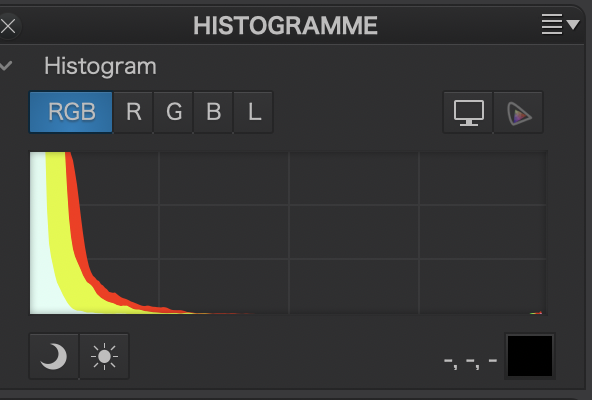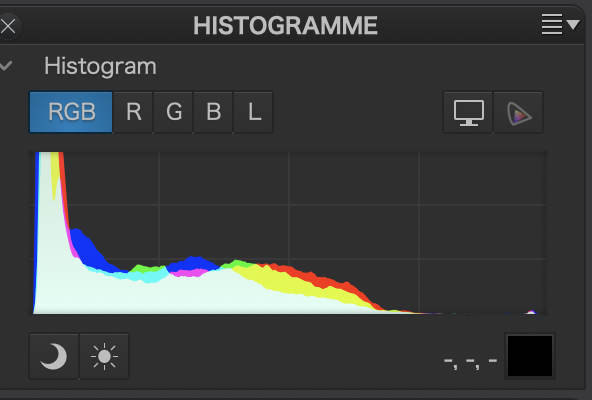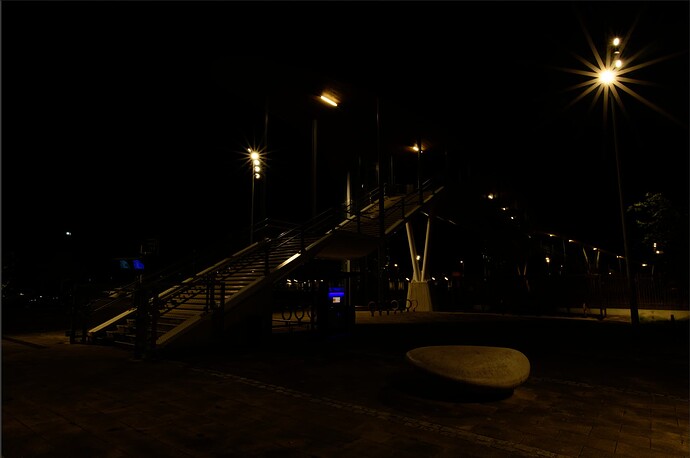As well as Cambridge in Colour Forums mentioned above, I would check out Forum list | Talk Photography especially if you are in the UK. Best of luck.
A better explanation as I see things, is to decide if I’m being an “artist” or a “photojournalist”. Over all the years I’ve been shooting, the single most important thing is to “get a picture”. A blurry photo incorrectly exposed is infinitely better than “no picture”. It’s like “aim camera and shoot”, then try to do better.
What I consider a “good” camera will make many of the choices for me. Not so, the Leica, as I need to keep the focus ring set in a reasonable position - no auto-focus. Once I learned how to use Auto-ISO my batting average went way up. Photo Editors are disappointed with poor photos, but they are much more disappointed with NO picture. Consider Robert Cape’s photos of the landings at Normandy Beach - perhaps they are technically horrible, but they showed the “reality” even better than had they been perfect images.
The title of this thread being “Growing as a photographer”, 99% of the time I agree with @Joanna, that I should strive to get the focus and exposure right, and to try to get a “good image”. For all the years I was doing radio control car racing photography with my Nikon D3 (and others) I would guess where I wanted the car to be, wait for the car to get there, and capture the image. The President of Associated Electrics, Gene Husting, taught me that. I also would put the camera on auto-focus using burst-mode, and control the zoom as the camera was clicking away.
One last thing before I shut up and put my keyboard away. Nothing has ever helped me more than “practice”. The more I practiced with less important images, the more likely it was that the images I really wanted to capture would be decent, or maybe great.
Interesting thought - as I see it, practice, more practice, and yet more practice helps, with the camera on “M”, and I was constantly learning from my mistakes, and from replies in the forum.
From what you wrote, I guess you’re not using 'Auto ISO". My thoughts are to set the aperture to what I need for depth of field, set the shutter for what I need to capture a sharp image, and let the camera select any ISO it wants to use. With DeepPRIME astronomically high ISO speeds seem to be tamed. Your thoughts?
I’m not good enough to do work like this, but all these images amaze me:
…and use hours and loads of gear to make many of these photos possible.
Think of each as a project with a plan, timeline, budget etc…and you’ll get there/close after much effort.
I suppose you are right. With enough time, and gear, and skill, and money, and luck, after months or years of trying, this can be accomplished, and the proof of that is all the images, showing that the images were accomplished. I appreciate all the effort that went into these images.
I was watching a YouTube video last night, which I found interesting. I left the TV on when I went to sleep, while watching:
https://www.youtube.com/watch?v=RAYsmD8Xlhc
Watching this video reminded me of two things - first, that while I do this on my computer, I don’t “think” this way while walking around with my camera. I know it’s the wrong way to go about it, but I work hardest at including things I want in my photo - but my composition mostly happens within PhotoLab. Sometimes I do it in the camera - but not always. On the other hand, for photojournalism, what I do now is perfect, but I guess I. ought to make more of an effort in ‘composition’. I’m not about to start posting images in this forum, and there’s a saying “you can’t teach an old dog new tricks”, but I intend to try.
This fellow ‘FUTC’ has lots of videos I find interesting.
I don’t think of this as “Growing as a photographer”, but that’s a mistake on my part. Never too late to learn.
That to me is where you are wrong Mike. The composition should happen in your minds eye. That way you stand a better chance to get it right in camera.
I now understand why sometimes you take so many pictures of the same subject from different angles. To me, completely unnecessary. You should have walked around to see the best angle in your minds eye, and then taken the picture thus saving a lot of battery power and in the old days a lot of film.
Sorry Mike, just another method to try.
Difficult to explain…
Usually the initial composition does happen in my mind, and that’s what I capture in the image, leaving extra room around it to do my “final” composition in PhotoLab. I usually consider other ways to show it, and usually capture them along with my first shot. After walking around, and trying different things, and thinking of ways to further improve it, I will take another shot.
(Digital film is free, and the time of re-composing and re-considering things helps me “dial in” on what I want. I have no issue with capturing a dozen slightly different images.)
As @Joanna constantly pointed out, I no longer have an “editor”; I’m the only editor now… but old habits die very slowly, and just as how I’d have left the final composition up to my editor, who placed the image on the magazine page, I leave the final choice for me to decide as I see the various choices on my computer.
Yes, with film, this was a limitation, but with digital, I am happiest when I have several similar images, and get to pick which one is “best”. …meaning the final choice is made on my computer screen.
I’m not suggesting what others should, or could, do - I’m only describing what I usually do. The final choice (for me) is created in PhotoLab.
Why are you “sorry”? I find it difficult to break old habits from decades ago, and my “extra” images act like “insurance” in case I made a mistake in what I expected to be the best image…
(I’m not very good at making decisions, never have been. But I guess you realize that.)
(Am I the only one here, who edits and posts an image “today”, but re-considering later, decides it needs a change? I think even Joanna does this. I’m lousy at making decisions, as far too often I think of improvements…)
I do use Auto-ISO. I have a range set which I find acceptable. My camera chooses both the ISO and the shutter speed. Sometimes, perhaps shooting birds in undergrowth, both of those parameters will creep upwards. It is at those times, I think I should be using “TAv” mode. In this mode, it behaves exactly as Av, except I can choose to fix the shutter speed as well by means of a second dial.
No you aren’t. But my “today” and “tomorrow” are often years apart and with the benefit of newer software and newer skills.
I bought a Nikon Z6II mostly for the in-box image stabilization. And now I’ve discovered the use of the real time histogram to adjust my exposure during shooting. A wonderful tool.
George
I tried becausec it’s a much better tool then the “zebrastripes” but i find the box in screen distracting and it blocks the composition.
Yes you could cycle the display modes to have both but that i forget often.
An other thought of the use is, it’s based on the srgb modes. Or AdobeRGB if you set that as colorspace. So when you use ETTR it is set for visual saturation inside the colorspace srgb or adobeRGB.
Then again auto exposure is also calibrated for jpeg colorspace. So i set camera jpeg colorspace always at AdobeRGB. And indeed when you have time to carefully expose take the time to look at the histogram and try to maximise the exposure in a high dynamic scene. (for “flat” scene’s a ecv +1 +1,5 is always a good idea to lit up the darker sections.)
I don’t know what camera you have. But the Z6II just adds the histogram. And no, I don’t think it makes the composing more difficult. It’s rather small.
The zebra’s are the result of the light meters calculation. The histogram is based on the end result of the image. I do correct the light meters calculation with it.
George
I have a panasonic g80.
I did a test with it for zebrastripes but when i act on the warnings it under expose.
So on my camera it’s jpeg bount. (as in most camera’s i think AE is calibrated for jpeg output so also the highlight warnings.)
When i am athome i try to take a screenshot of the EVF and LCD with and without histogram in pipmode.
All settings in all camera’s are output related.
George
Possibly because of my background in Large Format film photography, I find myself wondering why so many digital shooters insist on using so many automatisms for exposure.
The first thing one learns when shooting LF film is to know the dynamic range of the film and where, in that range, is the 0 EV point. Once you have that, it is a simple matter of spot-metering the part of the scene, for which, you want perceptible detail and then reducing that exposure by two stops.
For example, for Fuji Acros 100 film, the dynamic range can stretch to around fourteen, stops but I can only achieve that range in the final print by overexposing and under-developing.
For colour transparency, I use Fuji Velvia 100, which has a very limited range of only five stops and exposure has to be metered for the brightest part of the scene and adjusted to over-expose by two stops. If the whole scene cannot fit within those five stops, then judicious use of graduated filters becomes essential to lower the brightest part of the scene.
This is what I mean by Intimate knowledge of the film.
Well, the same applies for digital sensors, except that you need to spot-meter for the brightest part of the scene and then over-expose by two stops, just as you would for colour transparency film.
Why? Because, for negative film, you can always recover highlight detail easier than you can shadow detail and, for digital sensors, you can always recover shadow detail easier than you can highlight detail.
How to improve your photography? Get to know your camera intimately. Do tests to find out where its limits are, especially in terms of exposure, and simply learn to expose within those limits.
I never use either the histogram or blinkies, because I can guarantee that my images are always in range. This is not boasting, it is something that every photographer should practise.
What is more, DxO gives us the most amazing noise reduction, so the shadows can be recovered, even in high ISO shots.
But, if you rely on the screen on the back of the camera or the histogram, you will never get the best out of your images, because they only show the JPEG dynamic range and do not account for the vast amount of shadow detail that can be recovered in post-processing.
e.g.…
The SOOC RAW looks like this…
… and the histogram shows an extremely blocked shadow end…

But, because this shot was correctly metered, the result in PhotoLab, after recovering shadow detail, looks like this…
… with a histogram that looks like this…

It’s all down to knowing your camera intimately, especially the dynamic range and 0 EV point, something the camera histogram can never give you.
When I would use the histogram I would get the same.You exposed for the high lights, the lamps. I would get the same result. Or even better. There’s some room on the right side that I would use.
It’s not only a matter of exposure, but also of what can be recovered in the raw converter.
George
Indeed, but you can never recover blown highlights whereas, as you can see, you can recover all sorts of shadow detail.
And that’s where the histogram in the evf is so usable.
George
I like this thread, lots of ideas in here. These are my 2 cents…
i) Study the composition, lighting and aesthetic of paintings, illustrations and photos you like. Studying will allow your brain to learn what it is in those images that works for you (same as speaking a new language out loud helps you to learn it).
ii) Try and recreate those images with the equipment you have. This will help you to learn how to create the image (whether that is lighting, camera technique (shutter speed, depth of field, composition etc). I found this a really useful process when learning photography.
iii) Follow photographers you like on Instagram. Many share behind the scenes photos explaining what they did to create a photo.
iv) Read books and magazines
v) There is a lot of very helpful stuff on YouTube, and a good amount of not so helpful stuff too. Nigel Danson talks about what he is thinking when out photographing landscapes. This is really insightful imo - he sharing what he is searching for to capture, which is a huge part of photography.
vi) Go on a course or two.
vii) Try to not get too caught up with creating the perfect image in camera. The camera is stage one of the process. Post-processing is stage 2 (similar with negative film, printing was stage 2)
viii) Try not to get too caught up with needing a certain piece of equipment - sometimes it is required for specific tasks, but when learning you can still achieve a huge amount with limited equipment.
ix) In camera histogram, zebra lines, blinkies, ETTR (my camera (Nikon) even has a button on the lens I can press to make the exposure shift to prioritize highlights) - these are all technical things to help you achieve what you’re trying to create. It is not one size fits all - some will be suitable for you a lot of the time and some you may try and then never use again!
x) Practice, practice, practice
xi) Seek feedback, finding a mentor can be really helpful
xii) Enjoy
I thought I’d finished, but then these additional thoughts came to mind…
xiii) Oh, and don’t worry about defining ‘your style’. That will most likely evolve as you learn anyway, and then still gradually shift with time too (just look at the work of the famous painters - the work they are most famous for is usually massively different in style to their earlier work).
xiv) Learning post processing is a similar process as above! And this constantly evolves as software and hardware advances (over the years (in sequence) I’ve used to edit photos - Photoshop, Aperture, Lightroom, Exposure X6, DxO Photoloab).
xv) Accept you’ll make a lot of mistakes along the way. Do your best to learn from them ![]()
xvi) There will be times you just need to agree to disagree with someone - just move on politely. They were probably trying to help, and just because you disagree on this occasion doesn’t mean this person can’t offer good advice in the future.
I’ve wondered about this, but haven’t had a chance to try it, nor do I want to buy yet another camera. The big thing (to me) about mirrorless is that you are working with the actual “pixels” (the sensor) to help you select both the exposure and focus. Despite using up batteries so quickly, I wondered if any of this would be of use to me, and I decided to stick with what I’ve got (DSLR). Nikon’s Z9 sounded amazing to me in so many ways, but I think I would get the same results as with my D780 or a D850, and I’ve decided that 24 megapixels is more than enough for me. Anyway, I quit looking at mirrorless cameras and the new lenses for them.
Recently Nikon said they were releasing a Zf, which I expected to be similar to my Df. Turns out they deleted the “back button focus”, which is my confirmation that I’ll never buy that camera. I suppose I could follow my friend, and buy a Z8, but I’ve decided I’m not going to buy anything more - I’ve already got too much.
Anyway, these recent posts remind me of something @Joanna taught us (condensed):
I remember being skeptical, but once I understood correctly, things worked just as Joanna described.
Back to this recent post - my only question here - does this advice work just as well for “mirrorless” cameras, as it does for a DSLR camera? Does measuring from the sensor work the same as “spot metering” with a DSLR? I think it should…
For me, I’m done with buying anything new. By the time the world becomes “mirrorless”, I’ll still be shooting DSLR, perhaps for the reasons that some audiophiles prefer a turntable and records, instead of digital music…
I’m just curious - again, for me, I will continue to follow what Joanna suggested, as it works.

